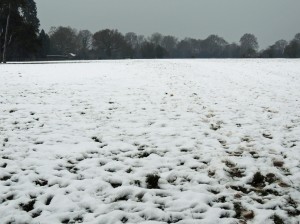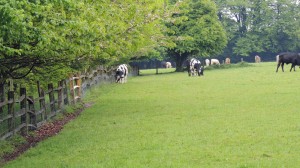Support us from £3/month
We deal with almost 1000 cases a year assisting communities, groups and individuals in protecting their local spaces and paths in all parts of England and Wales. Can you help us by joining as a member?
A popular footpath at Horsted Keynes, four miles north-east of Haywards Heath in West Sussex, has been saved on its existing route.
West Sussex County Council backed the landowner, Miss Wykeham-Martin, in her application to move the footpath, number 8/1, which runs across three fields at Lucas Farm to the edge of two of them. Because there were objections the case was referred to the Planning Inspectorate and a public inquiry was held last year, at which the objectors included the society, Horsted Keynes Parish Council, the Ramblers and four local residents.
The inspector, Susan Doran, ruled that the path should not be moved. Although the landowner had cited problems of users straying from the official line of the path, loose dogs, littering, damage of hay crops and disturbance to livestock, there was scant evidence that these were due to the presence of the footpath, and the inspector considered that moving the path would not make a difference. She accepted that the diversion was in the interests of the landowner but when it came to looking at the effect on the public, she considered that this was sufficiently damaging to outweigh any benefit to the landowner.
The objectors argued that the existing route provided rare distant vistas, with unbroken views across the Weald, its tree-clad hills and church spires. The diversion would create a dog-leg with a confined, fenced-in section.
Says Paul Brown, our local correspondent for Mid Sussex who represented us at the public inquiry: ‘The existing public right of way has a delightful open aspect across the fields. The dog-legs and blind corners that would have been introduced by the field-edge diversion were unnecessary, unnatural, ill-defined and unwanted. They introduce loss of sight-lines, which would have degraded the enjoyment of the existing right of way.’


